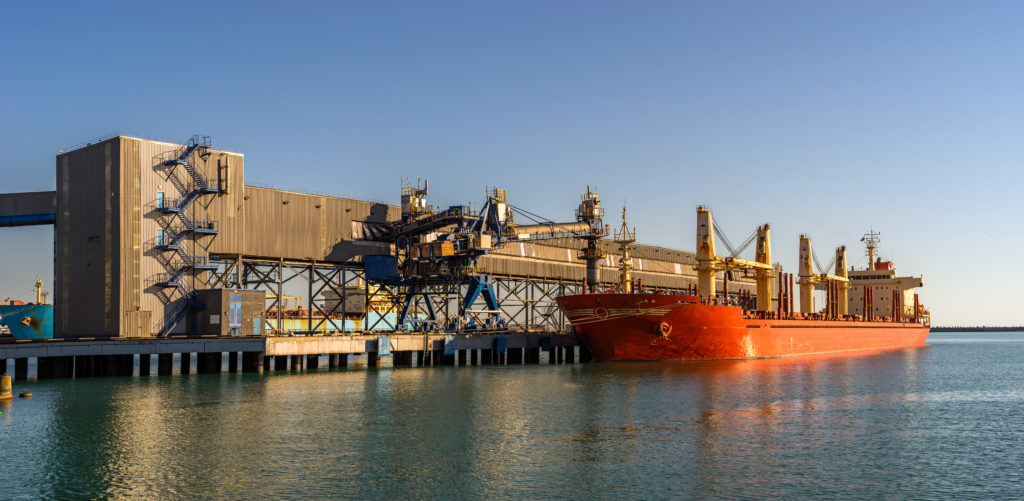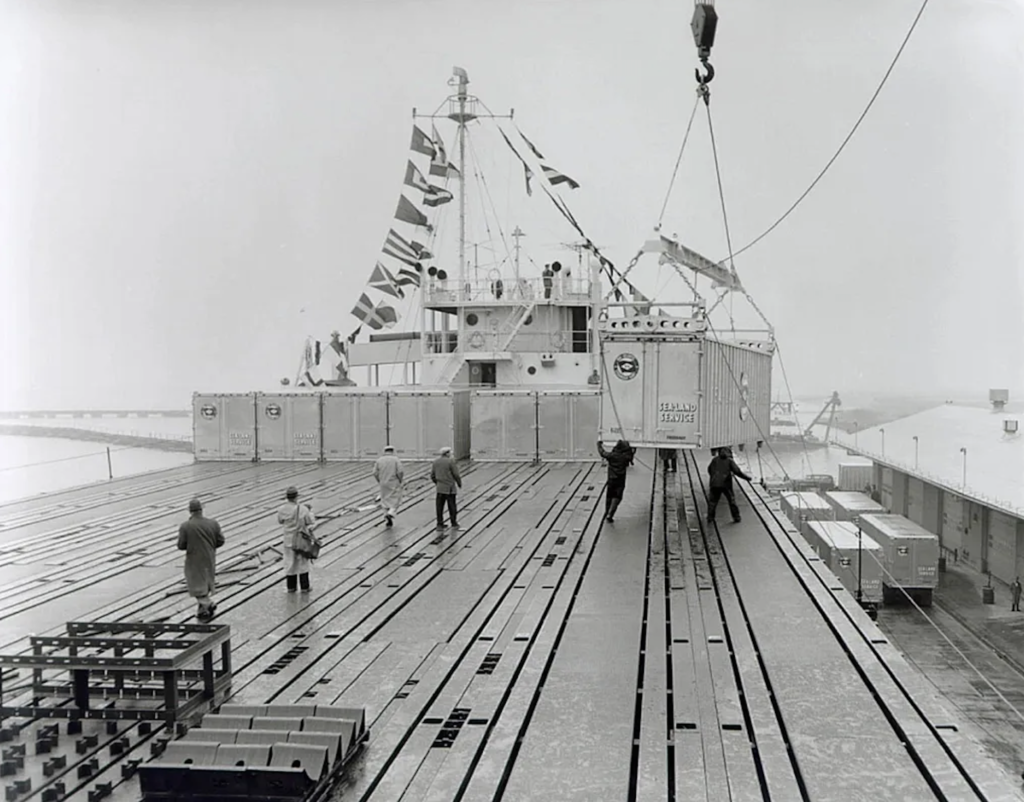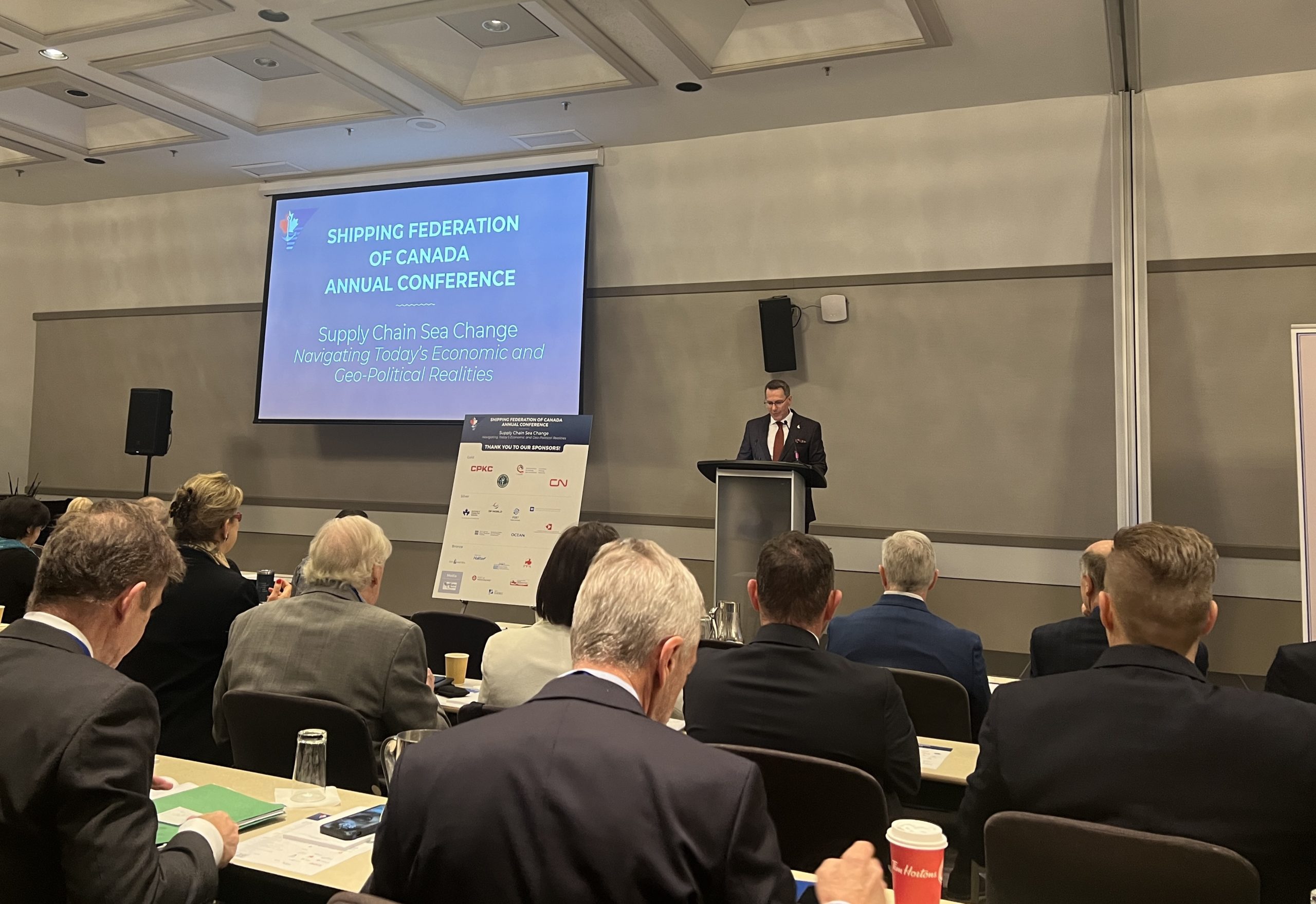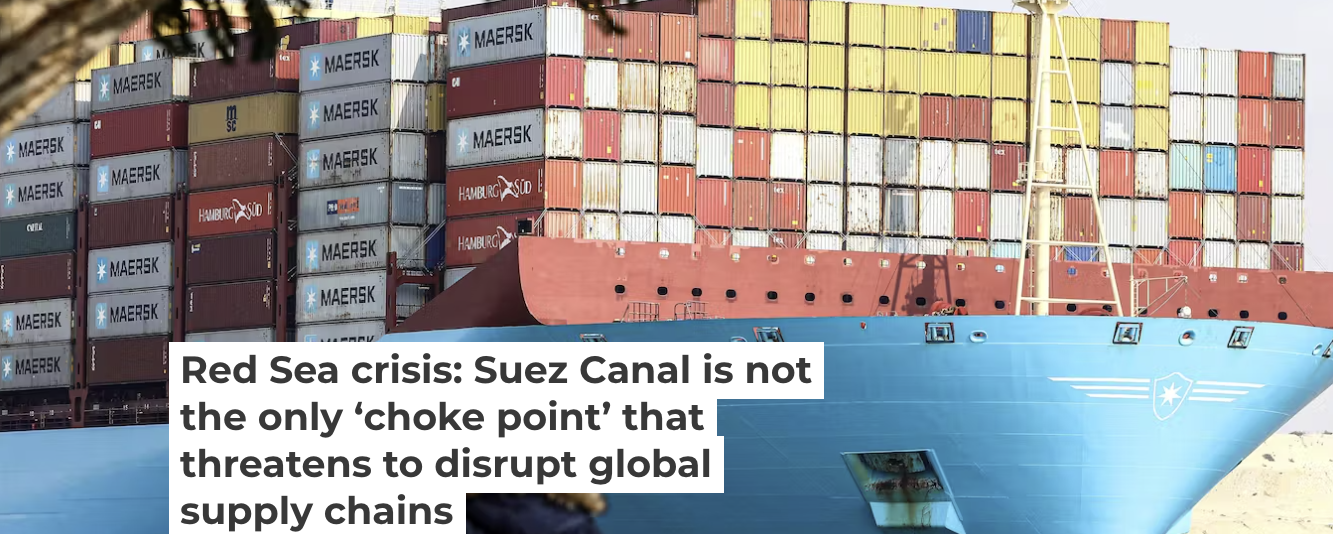by David Reid MA FNI
In Rose George’s book Ninety Percent of Everything (2013) we learned that the maritime global supply chain works largely in the background to provide the needs of the global community. For some countries, the outflows or exports create and support their economic growth, copper ore from Chile, Iron ore from Brazil, Coal from Australia. The global food chain depends on the shipment of fertilizer and cereal grain. We have recently seen how the conflict in Ukraine has disrupted flows of both fertilizer and cereal grain and these have led to shortages and price spikes for basic commodities. But how do these cargoes find their way onto a ship and how are they contracted for shipment?
Commodities like raw materials used for making steel and in construction begin their life in the supply chain as types of ore. For example, to make aluminium you first need bauxite ore. Major deposits of this ore are found in Australia and 100 million tons was exported by ships in 2022. The bauxite ore is then refined to produce Alumina and that in turn is smelted to produce Aluminum. The flow of these raw materials is managed by global trading companies which specialize in buying, selling, and transporting around the globe. Companies like Swiss-based Glencore, Singapore-based Trafigura and US-based Koch Industries are prime examples. These companies engage with shipowners and ship operators to move single cargoes or multiple cargoes on a voyage ‘charter party,’ also known as a ‘contract of affreightment.’

Trading companies employ shipbrokers to represent their needs in the shipping market and they set out their requirements to solicit offers from shipowners and operators. Supply and demand determine the cost of freight and the trading companies are very astute at playing the market to achieve the lowest cost to move their commodity. However, they are also involved in complex supply chains that may involve forward planning to meet the needs of industrial operations that span the globe. Sometimes they must secure a ship within a specific time frame and that can play to the advantage of the ship operator who happens to have the right ship in the right place at the right time.
The negotiation of voyage charters for a full and complete cargo follows the same process as a time charter, concluded via a chain of shipbrokers. It also follows the ethos of “My word is my bond.” However, for a voyage charter, the core element is the type and quantity of cargo to be loaded. The quantity is specified within a range expressed as a percentage of the stipulated amount, so a cargo of wheat might say 50,000 tons plus or minus 5% in the owner’s option. This means that the ship used by the shipowner/operator must carry at least 47,500 or a maximum of 52,500 tons. Sometimes the voyage charter is for a named ship and sometimes it is for a “to be named” ship or “TBN.” If it is for a named ship, it can also be stipulated for that ship or a similar substitute.
These flexibilities are needed because the voyage charter is negotiated in advance and some weeks might pass before the agreed loading dates arrive. During that time a ship might encounter delays at a prior port or have a technical difficulty. So, the negotiation of an alternate ship or a ship that will be named closer to the loading time represents commercial flexibility.
Perhaps one of the most critical aspects of the voyage charter is what is known in the trade as the “laycan.” This is an abbreviation for the “laydays cancelling.” Laydays are an agreed window of time during which a ship must present itself to commence a charter. The laydays are a window of 5, 10, or 15 calendar days that must be met. The master of the ship must arrive at the designated port and issue a notice of readiness to the local steamship agent at the port within the laydays. If this does not happen, then the charterer may elect to cancel the charter – thus the origin of laydays cancelling or “laycan.” In some cases, the laycan may be extended but a shrewd charterer may use this to renegotiate if the market has fallen or simply cancel and fix an alternate ship at a lower price. So, as you can imagine there is a lot of stress when a ship is at risk of missing her laycan because there may be severe economic consequences. Often a ship may have sailed on a long ballast voyage to arrive at the loading port within the laycan. Perhaps across the North Pacific to arrive in Portland Oregon for a cargo of grain. If bad weather causes a delay and the ship loses time, it can result in a lost charter.
Under the voyage charter once the ship has presented her notice of readiness there are agreed times allotted for the loading and discharge of the cargo. These are known as the “terms” and form the basis for laytime. For example, at the loading port, the charterer may specify that the cargo will be loaded at the rate of 5000 tons per weather working day, Sundays and holidays included (abbreviated to 5000 wwd shinc). For a nominal cargo of 50,000 tons this equates to 10 weather working days. Note that weather working is extremely important here because any days lost due to inclement weather are at the owner/operator’s risk.
Let’s say that a ship arrives to load but the port is congested, and the ship must wait at anchor, in such case the laytime clock starts to run for the 10 allowed weather working days. If the ship waits more than 10 days, then the voyage charter provides additional compensation to the ship owner/operator with the payment of a daily demurrage. Conversely if the ship loads quickly and in less than 10 days the charterer earns dispatch. After the ship has loaded these laytime calculations are made based on two critical documents, the notice of readiness and the statement of facts. Local steamship agents prepare the statement of facts, and they are then used to transform the agreed terms of the charter party into either a claim for demurrage or dispatch.
The subject of laytime calculations has led to perhaps more commercial disputes that have given rise to laytime and a mysterious world of skilled laytime practitioners. Sometimes the commercial risks can be staggering, during my time as the supply chain director at a major European steel plant we encountered congestion at our private port due to multiple arrivals of large ore carriers, at that time the daily demurrage rates were more than $100,000 per day, with several ships at anchor we had days when the laytime was clicking up a daily demurrage bill of $300,000. That really focuses the mind!
Not all cargo is shipped as a full cargo and in many cases, the charterer may have what is described as a part cargo. This might be carried as a full cargo on a ship of a smaller size, or it may be carried on a larger ship as a part cargo combined with another part cargo. Ships have a number of cargo holds or compartments and so it is possible to load a different cargo in different holds. This requires greater attention by the master and chief mate to make sure that no undue stress is created on the ship when only a part cargo is onboard. Ship operators use their creativity to find various combinations of cargo that will deliver a higher freight yield and increased profit. This requires much greater commercial skill because expert knowledge of the cargo type, the stowage requirements and methods of handling are needed to fit all the commercial components together. For example, when ships trade from Brazil into the Great Lakes with steel cargo, they carry part of that cargo to east coast ports – this enables the ship to carry a full cargo of steel from Brazil and then after discharging part of the cargo in Philadelphia or Baltimore they are sufficiently lightened to be able to enter the locks to pass through the St Lawrence Seaway and on to ports like Cleveland and Detroit.
Some ships employed in what is known as Liner trades carry smaller part cargo volumes that are known as liner bookings or freight parcels, these are typically carried on ships that are in a dedicated service and the ship will have a mix of charterers. This can be seen in the forest products trade where dedicated ships carry freight for a variety of different clients. The container sector is the ultimate mix of part cargo because every shipping container is a part cargo, and the unified nature of a cellular container ship makes it possible to create a cargo that is made up of thousands of TEUs or “twenty-foot equivalent units.”

Earlier this year, my wife and I shipped our personal effects from Pennsylvania to France. We packed and manifested all our belongings, and I then delivered the boxes to a warehouse close to Port Newark, NJ. A week later our container was loaded onboard the Atlantic Sky and 10 days later it was at the port of Antwerp. Prior to the era of the modern container, our personal effects would have been shipped box by box probably on a pallet on a traditional liner cargo vessel. Thanks to Malcolm McLean and the container revolution that started in Port Newark on April 26, 1956, it is now efficient and simple to transport small shipments around the world.





